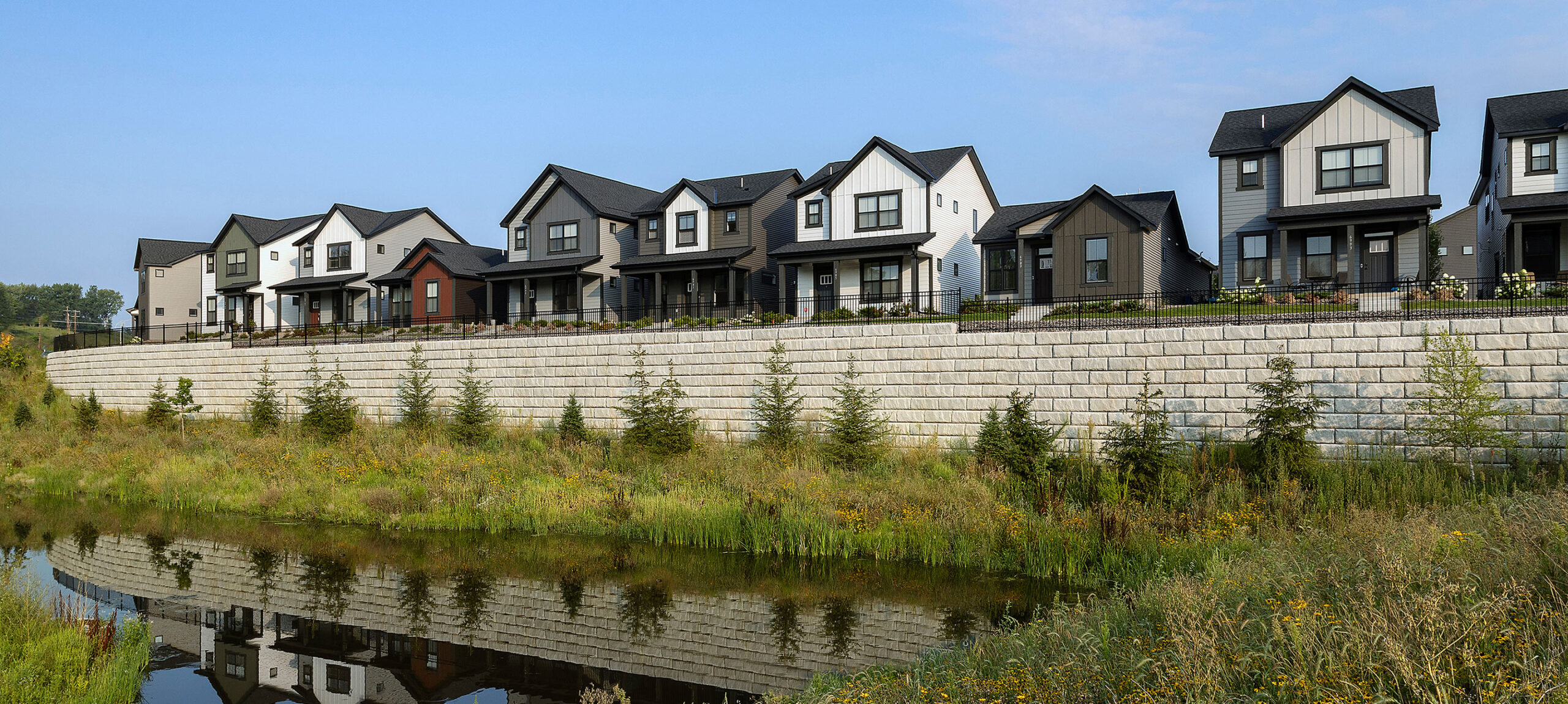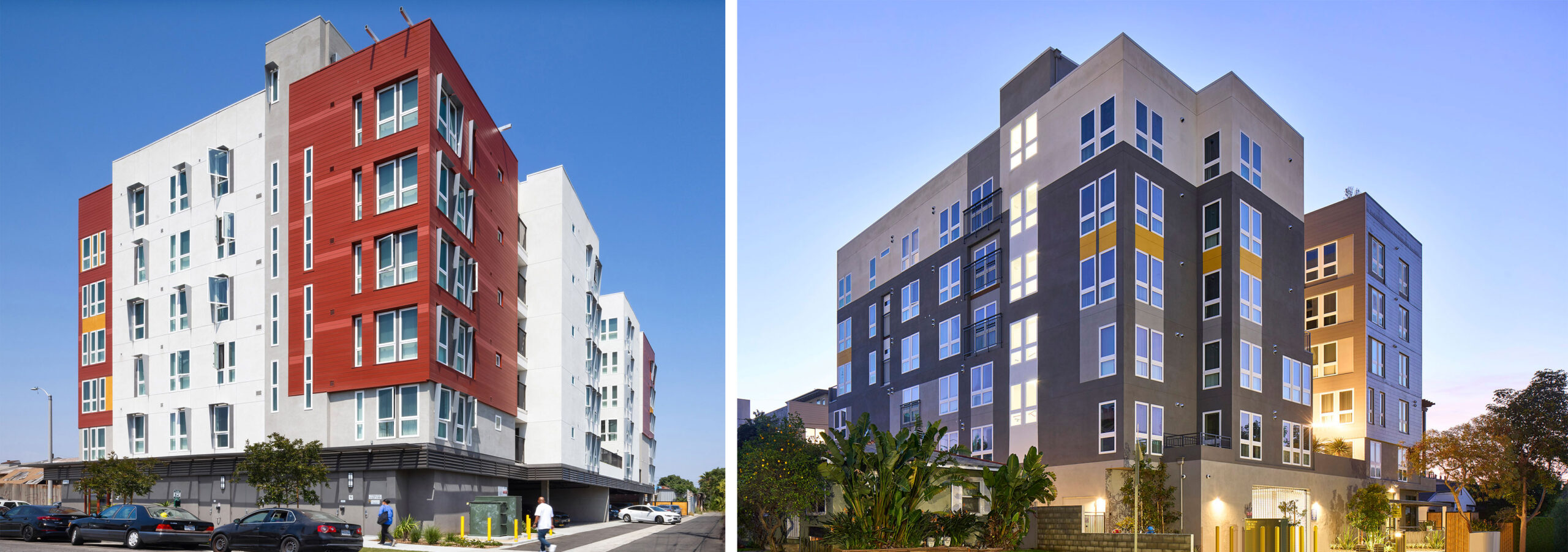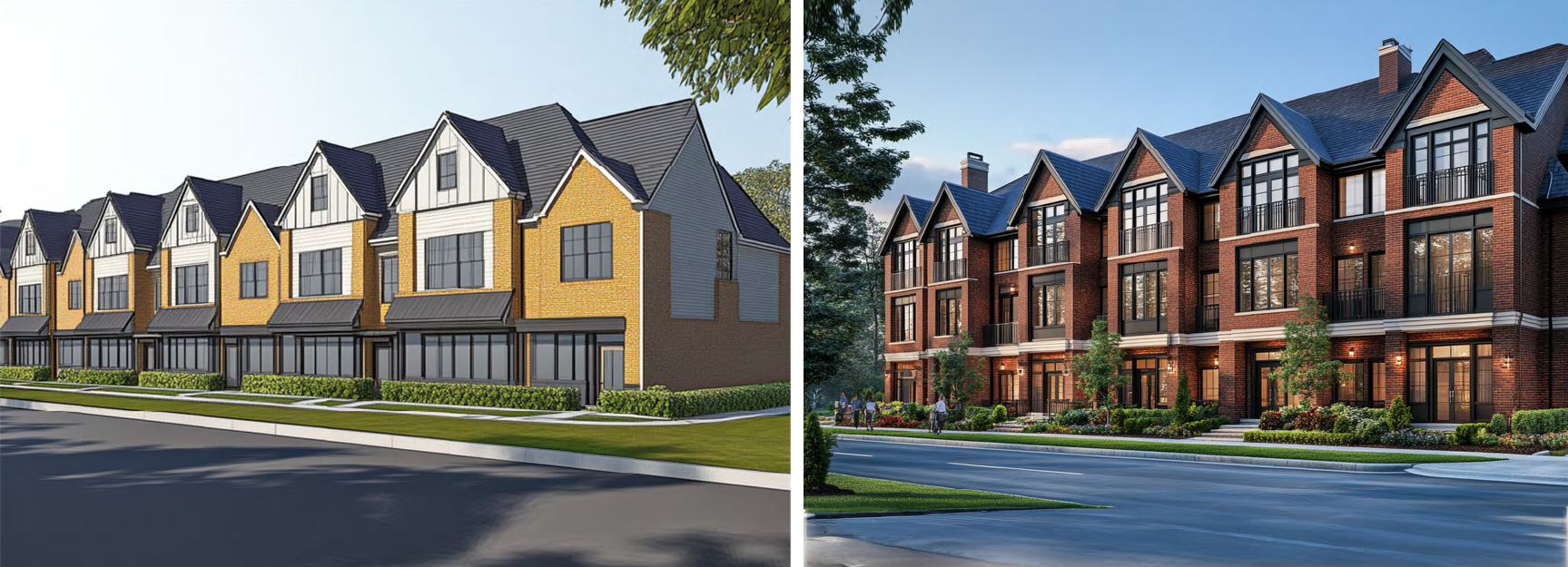BSB Design’s client-centric approach utilizes a diverse tool kit of practical, technological, and aesthetic strategies to meet regulatory and design requirements. Increasingly that kit has incorporated the application of legislative tools for affordable and market-rate housing projects.
Putting our in-depth understanding of California’s AB-1763, AB-2162, AB-2345 and even SB-35 to use during the planning and design phases offers the potential to increase FAR and height for these projects, and also reduce parking requirements. Across the board this translates to increased density, more flexibility to utilize difficult or previously unworkable sites, and assistance to developer partners to meet their pro formas. For communities, the increased density is step closer to meeting Regional Housing Needs Assessment (RHNA) mandates.
This month’s blog highlights a handful of key legislation pieces that we leverage to help developers across the affordable and market rate housing segments. For years, density bonuses have been applied as a means of making affordable housing projects “pencil out.”
However, with the passage in recent years of dozens of new state-wide pieces of legislation, density bonuses, incentives and concessions are being increasingly applied to both market rate and affordable housing designs. For Withee Malcolm, a thorough understanding of this legislation and both product types allows us to serve as true partners to developers as projects face regulatory, funding and schedule pressures. It also facilitates teams’ desires to create inclusive, community-centric architecture.
With an increased arsenal of tools at our disposal, we’re helping projects across the spectrum—from large, greenfield sites to small, infill parcels, create opportunities to increase density. The following form the basis of this expanded tool kit:
Assembly Bill 1763 – Increased density and taller structures for affordable projects
AB-1763, signed into law in October of 2019, is a significant modification to previous legislation that facilitates denser, taller affordable housing. The new provisions offer up to an 80% density bonus, height gains of up to three stories (33’) if the project is located within a half mile of a major transit stop, and parking reductions or even eliminations in certain cases. The law represents the largest ever bonus provided by California, and the first time a bonus has been completely tailored to the affordable housing segment.
As a state mandate, density bonuses are by right, and set on a sliding scale based upon the percentage of affordable units at each income level. Updated provisions call on a local municipality or county to provide one or more incentives or concessions (reduced setbacks or parking requirements, minimum square footage requirement requests, or local financial benefits) to projects that qualify for a density bonus if an affordable portion is for certain low-income college students, transitional foster youth, disabled veterans or homeless persons. Special provisions are also called for if the project is a senior housing development or is a mobile home park, age-restricted to seniors. In both of these latter cases no affordable units are even required.
Assembly Bill 2162 – Streamlining approvals for supportive housing
Although AB-2162 went into effect in January 2019, it has become an important streamlining tool for affordable and mixed housing projects. The law amends existing legislation, applies statewide, and requires local entities to streamline housing permitting for developments that contain a minimum amount of supportive housing in zones where multifamily and mixed-use development is permitted. Most significantly the law removes CEQA analysis and the requirement for conditional use authorization or other discretionary entitlements granted by planning commissions.
Assembly Bill 2345 – Sliding scales for density bonuses support market-rate projects
AB-2345, which offers tremendous opportunity for market rate projects, revises a number of density bonus law provisions to provide additional entitlement benefits for projects that include qualifying affordable housing. This law has become an almost fundamental component of urban infill multifamily approval planning, especially where municipalities already require affordable units as part of their inclusionary housing ordinances.
At a high level, the amendments offer more attractive density bonuses for projects that offer lower income and moderate-income units. Importantly, it increases the maximum density bonus, up to 50%, based on an updated sliding scale of housing affordability. The law also lowers the criteria threshold for pursuing incentives and concessions by 3% for those seeking two concessions and 6% pursuing three.
In addition to clarifications on measuring half-mile measurements to major transit stops for additional concessions or bonuses and jurisdictional requirements that their annual General Plans include specified information regarding density bonuses, the law also decreases the maximum parking ratios for two- to three-bedroom developments to no more than 1.5 spaces per unit. Developers can also request parking eliminations for age-restricted rental developments if paratransit service is offered or if other qualifying criteria is met such as unobstructed access to a set bus route.
Notable legislation, although slowed during the 2020 legislative session, continues to be passed that is assisting California communities in meeting their housing demands. Additional legislation that took effect in January 2021, including AB-1851 and AB-725, are improving options for developers and designers. Withee Malcolm is already putting into action AB-1851 with several clients in Northern California, which offers religious institutions the ability to develop affordable housing on their parking lots without replacing the parking and utilize density bonuses if units are affordable. AB-725, which makes it easier for cities to allow medium-density housing by helping local governments, especially those in our traditionally high-cost coastal neighborhoods, plan for more inclusive, multigenerational neighborhoods that accommodate various income levels.



